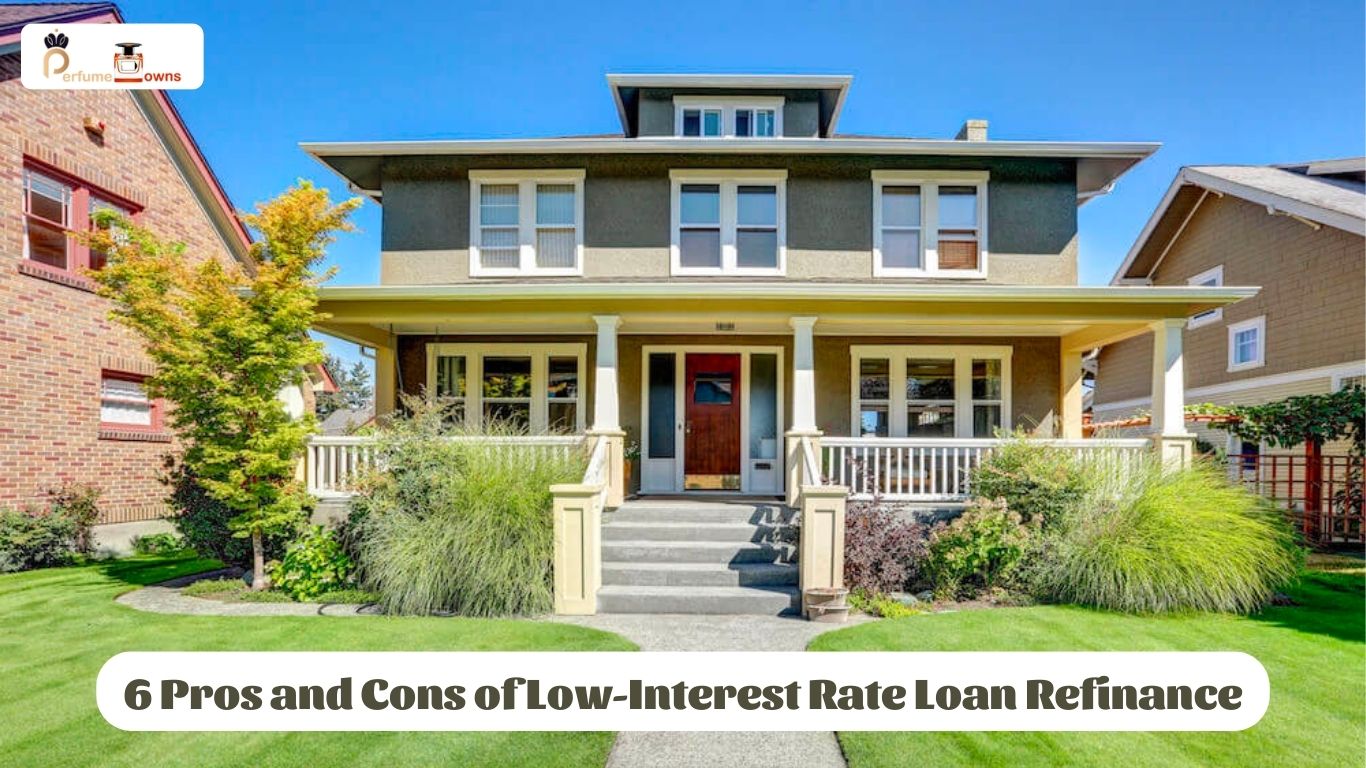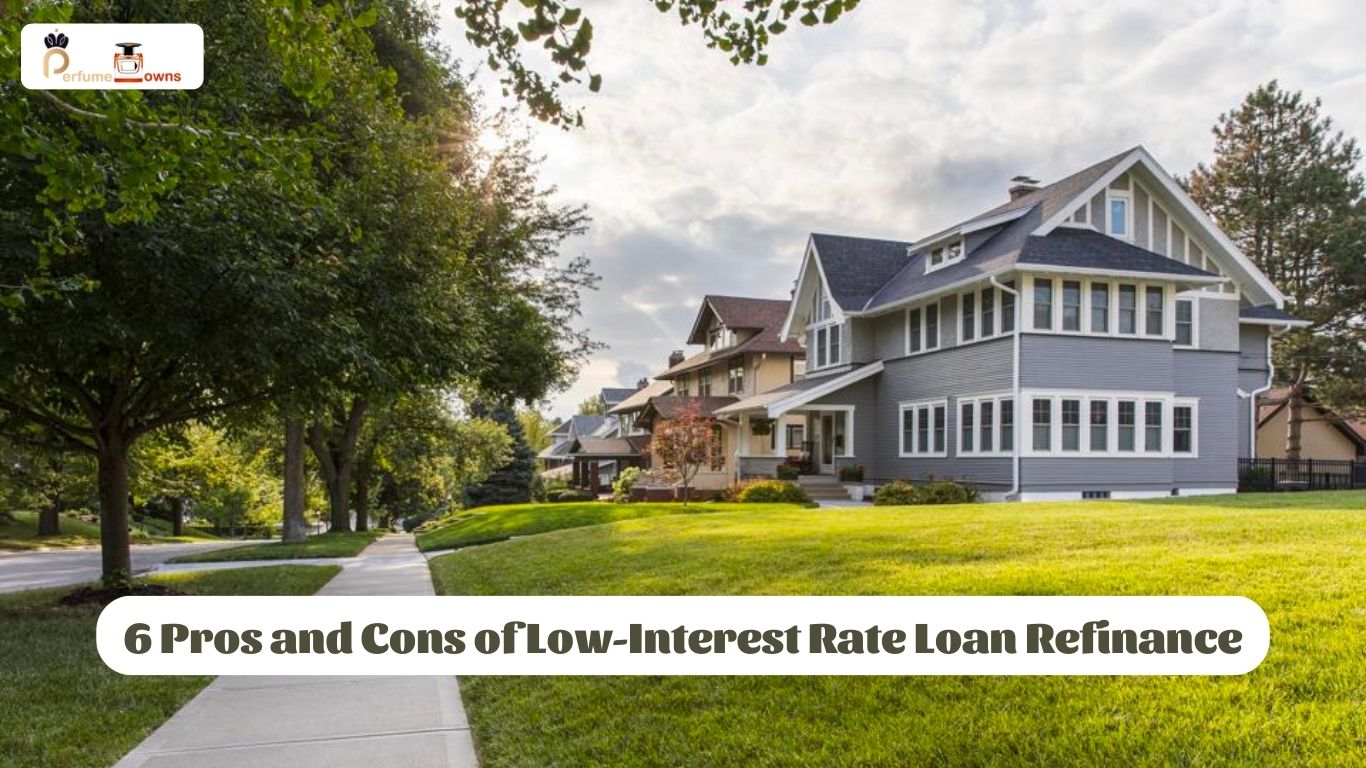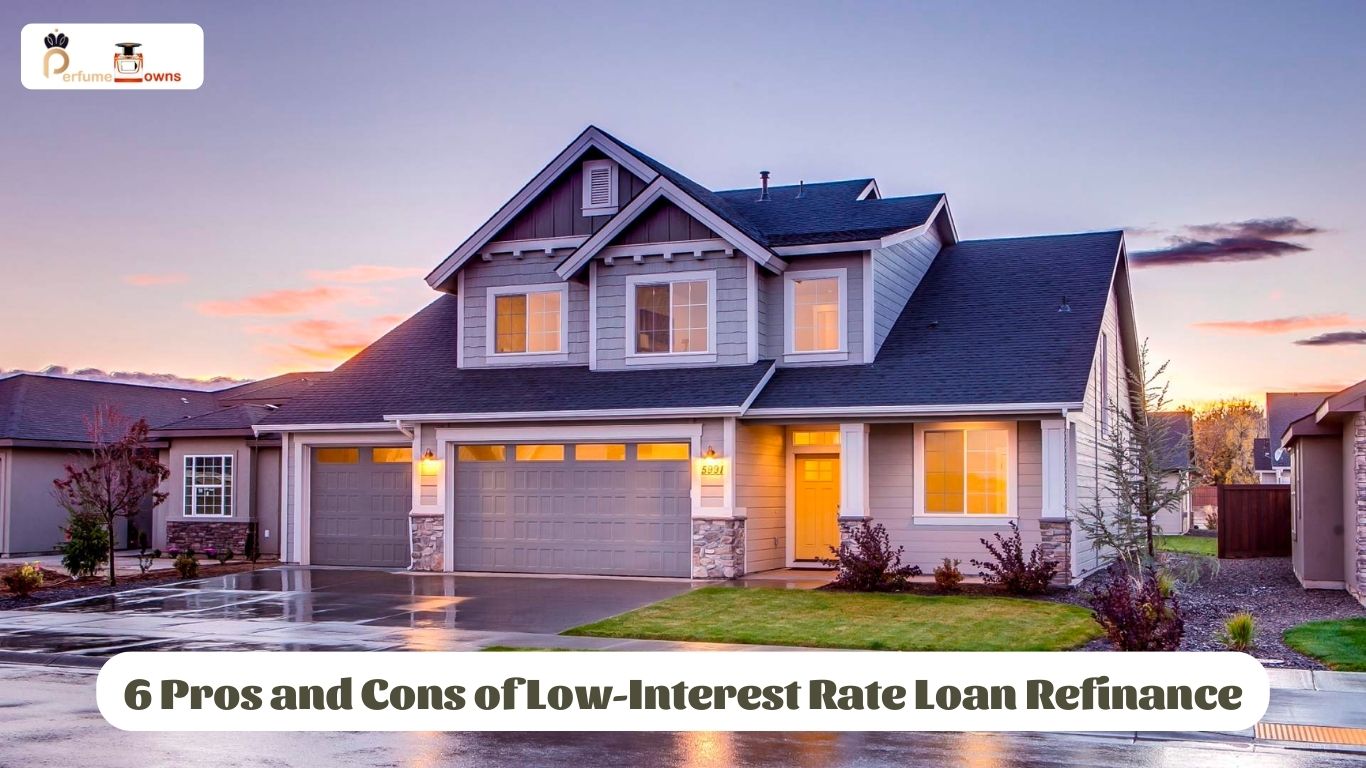Refinancing offers many homeowners the chance to acquire a cheaper rate, access their home equity, and much more; however, a number of factors come into play when refinancing your house, so it’s crucial to completely comprehend the procedure and determine whether refinancing is the correct choice for you. Let’s take a closer look at this article provided by Perfurmtowns, we will show you six advantages and disadvantages of Low-Interest Rate Loan Refinance and then give you needed advice in how to get the best Low-Interest Rate Loan Refinance.
Introduction of Low-Interest Rate Loan Refinance

Before getting into our content which is the advantages and disadvantages of Low-Interest Rate Loan Refinance, we will notice some definitions of what is Low-Interest Rate Loan Refinance. In order to pay off an existing loan with a higher interest rate, a low-interest rate loan refinancing entails taking out a new loan with a reduced interest rate. Thus, borrowers can potentially save thousands of dollars in interest costs by lowering the total amount of interest they pay over the course of the loan.
What types of debt can be refinanced?
There are some sorts of debts can all be refinanced:
- Mortgages
- Auto loans
- Personal loans
- Student loans
- Etc.,…
When you ask for a new loan with a reduced interest rate to pay off your previous debt when they refinance it. It may be simpler for borrowers to manage their debt if the new loan has a longer payback period or a lower monthly payment.
6 Pros and Cons of Low-Interest Rate Loan Refinance

1. Pros: You can almost certainly lock in a cheaper interest rate.
Between the time you first bought your home and today, a lot of factors have changed, including your financial condition, the state of the market, and the value of your house. Smaller monthly payments and more of your mortgage payment going toward the loan’s principal are two benefits of a reduced interest rate.
2. Cons: The savings might not be substantial, depending on your present rates.
You can’t always count on how much money you’ll save when you refinance your house. You might not notice a significant difference in the interest rate or monthly payments if your financial condition hasn’t altered significantly when you originally took out the loan. Refinancing frequently entails costs, so it’s critical to consider how much you’re prepared to spend vs how much you’ll save.
3. Pros: The transition from a 30-year term to a 15-year term is ideal right now.
You’ll pay more interest during a 30-year loan’s term. Refinancing while interest rates are low can help you save money on interest costs in addition to shortening the length of your loan. Plus, even if your monthly payments remain the same, paying off your loan sooner means you’ll be debt-free sooner.
4. Cons: It takes time to refinance.
You cannot take Low-Interest Rate Loan Refinance your house in a single day. To get a reduced rate, a lot of resources, time, and money are needed. Your life may be burdened by this, especially if the interest or payment amounts don’t significantly alter.
5. Pros: You might be able to use the equity you’ve accumulated to get cash.
You’ve accrued equity in your house as a result of the time you’ve spent owning it, making changes to it, and paying off your mortgage. You may be able to access part of that equity through refinancing, offering you a financial safety net.
6. Cons: The refinancing process has costs.
The Low-Interest Rate Loan Refinance process is not free. It’s critical to assess your financial situation and determine how much money you may save by refinancing your home.
How to get the best Low-Interest Rate Loan Refinance

By implementing a few professional guidelines, you may increase your chances of obtaining the best refinancing rate available. Remember that your approval will also be influenced by your house, your region, and the current trends in mortgage rates. The best Low-Interest Rate Loan Refinance rate is:
- Boost your credit rating.
- Examine rates for mortgage refinancing.
- Purchase points to reduce your rate.
- Choose the loan conditions that are ideal for you.
- Choose a fixed-rate loan.
- Don’t withdraw too much cash.
- Paying closing fees in advance.
1. Boost your credit rating:
Apart from addressing any mistakes on your financial report on Low-Interest Rate Loan Refinance, there are no fast cures for raising your score on the credit card. However, the following credit advice can also raise your score:
- Spend your money on time. Being consistent in this area is essential, according to McBride, as it accounts for the majority of your credit score.
- Pay off huge credit card debt. Your debt-to-available credit ratio can be lowered by making a lump-sum payment on a significant credit card bill. Avoid charging more than 30% of your credit limit on any one credit card.
- Keep previous accounts open. Your total amount of available credit and credit age decrease as you close down previous accounts that you have paid off.
- Request credit only when absolutely necessary. Each new credit inquiry lowers your score by a few points, but the effect only lasts for a short while. However, making too many queries quickly might damage your credit.
2. Examine rates for mortgage refinancing:
Consider comparing as many mortgage offers when Low-Interest Rate Loan Refinance as you can when wanting to refinance and save. A tiny improvement may save thousands of dollars.
The annual percentage rate, or APR, which includes yearly fees and provides you with a clearer understanding of the actual cost, should also be taken into account when comparing interest rates. The mortgage offer with the lowest stated rate can have additional fees and closing charges, which lessen the deal’s appeal.
If you’re unsure of where to begin, Bankrate makes it incredibly simple to compare all of today’s refinancing offers in one location. With the help of our tool, you may compare rates depending on your credit score and selected conditions, for example.
3. Purchase points to reduce your rate:
To decrease their borrowing rate, homebuyers can purchase points. In other words, you pay the lender in advance in exchange for a cheaper interest rate over the loan’s term. A “point” represents one percent of the loan amount.
Whenever possible, borrowers ought to talk about the loan’s conditions, according to David McClary, director for the not-for-profit International Center for Financial Counseling in Washington, D.C. Additionally, adhering to all requirements for mortgage approval helps you prevent having to pay extra for the amount you borrow. This consists of paid credit and taxes.
4. Choose the loan conditions that are ideal for you:
Although Low-Interest Rate Loan Refinance, including those with a ten- permanent or 15-year fixed terms, typically have lower interest rates than longer loans, the trade-off is significantly larger payments, which might be problematic if a job loss takes place.
Consumers shouldn’t strain themselves and commit to hefty payments that restrict their freedom in order to save a quarter or half of a percentage point, according to McBride. “It’s crucial to maintain financial flexibility.”
Although a longer mortgage term will lower monthly payments, McClary notes that the loan would cost more to repay since more interest is accrued over time.
5. Choose a fixed-rate loan:
When Low-Interest Rate Loan Refinance, many homeowners would select a 15- or 30-year loan; nevertheless, you must still pick between fixed and variable interest rates. When there is minimal difference between fixed rates and the beginning rate on adjustable mortgages, McBride claims that fixed rates are more advantageous for homeowners.
With a variable or adjustable-rate mortgage (ARM), the interest rate fluctuates on a set schedule according to the market and a margin chosen by the lender. since of this, a fixed-rate loan is considered less dangerous since, although your interest rate may reduce during certain times, it may also soar significantly.
6. Don’t withdraw too much cash:
The amount you pay every month will go up if you loan more money for a mortgage. A person who obtains a home loan for a $250,000 property with a 4 percent interest rate for thirty years and an initial ten percent security deposit spends $1,195 per month, while a 20 percent down payment reduces that to $955, according to Boies.
Despite the fact that there are numerous tools that can provide assistance, it is simple to become confused when faced with all the possibilities for Low-Interest Rate Loan Refinance a mortgage.
The conditions of the mortgage loan must also be well understood by the borrower. In order to discover a mortgage that best meets your needs, Boies advises using internet calculators as a decision-making tool.
7. Paying closing fees in advance:
Closing expenses typically range from 3 to 6 percent of the purchase price, depending on the area and price of the property you’re buying. Therefore, closing fees for a $325,000 home loan refinancing normally range from $9,750 to $19,500. Closing expenses can be subject to negotiation.
There is a catch when some lenders offer to wrap closing fees into the loan. A no-closing-cost refinancing loan will likely require you to pay a higher interest rate, which would increase your monthly mortgage payment. Additionally, you’ll wind up paying the lender extra interest throughout the course of the loan.
In Conclusion
Generally, getting Low-Interest Rate Loan Refinance can be a wise decision, and can allow you to lower your monthly payments, or get a shorter loan term. However, it’s important to evaluate both sides of Low-Interest Rate Loan Refinance, and see if it’s right for you. With the information above, we believe that we can help guide you through the decision-making process and find what is right for you.